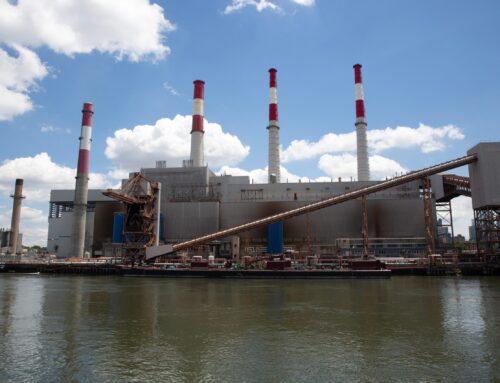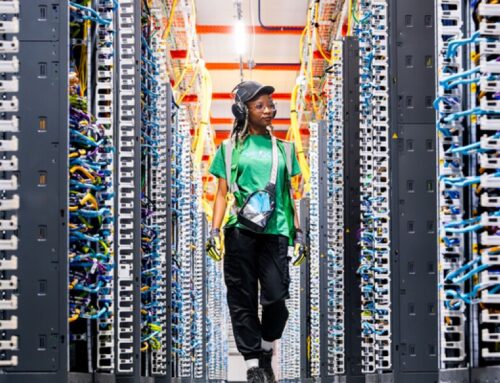Renewables in 2024: 5 Key Facts behind a record-breaking year
April 20, 2025

Global renewable energy capacity has reached new heights, demonstrating a remarkable progress in the world’s transition to clean, sustainable energy. According to the International Renewable Energy Agency (IRENA)’s Renewable Capacity Statistics 2025, 2024 marks yet another benchmark in renewable energy capacity and growth. The historic expansion is strong evidence of both the economic competitiveness and the scalability of renewables, prompting a clean energy revolution that can bring the world to achieve its target to triple renewable power capacity by 2030 – if challenges are addressed.
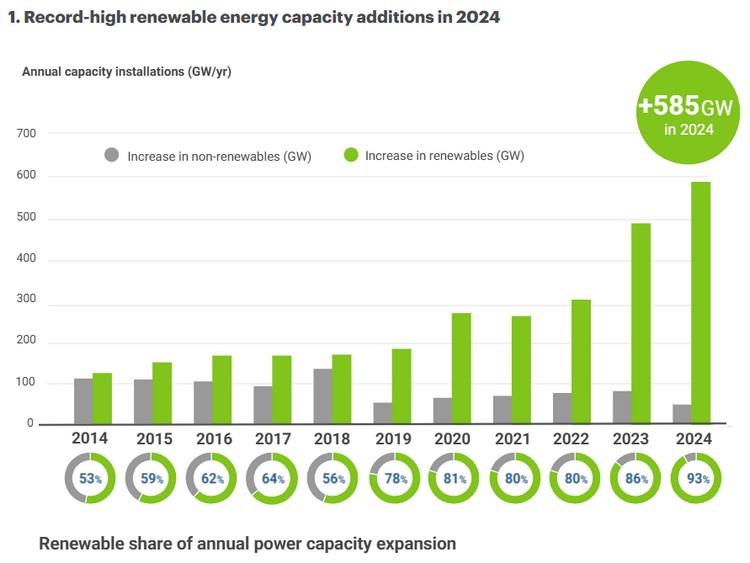
Global renewable power capacity increased by 585 GW in a single year, indicating a record rate of 15.1% annual growth, which surpasses 2023’s growth rate of 14.3%. The increase marks a consistent trend of renewables breaking their own expansion records each year, which underscores renewables’ strong business and investment case. As the levelised cost of electricity produced from most forms of renewable power continued to fall, renewables are not only environmentally sound but also the most cost-effective power source for countries around the world.
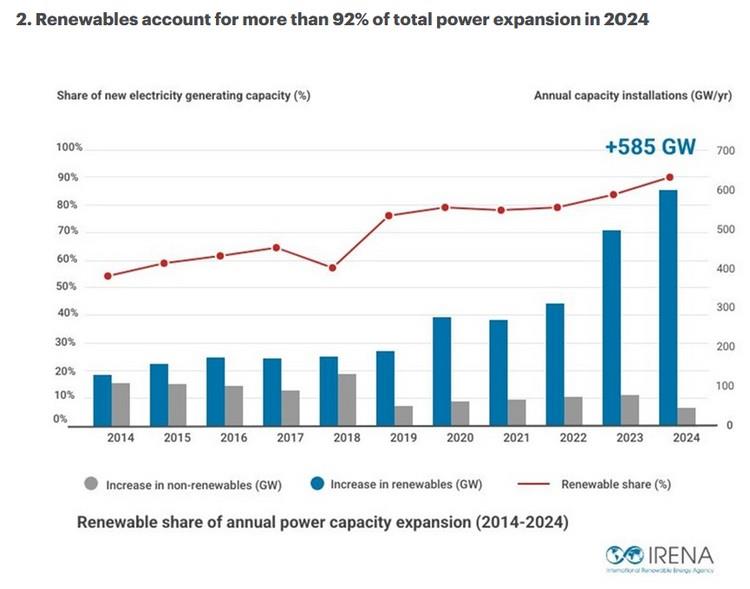
Overall, renewables accounted for 92.5% of total power capacity expansion in 2024, up from 85.8% in 2023. Their share in the world’s total installed power capacity rose from 43% to 46.4% during the same period, reflecting both accelerated adoption of renewable energy and a slowdown in non-renewable capacity additions – a trend further driven by the large net decommissioning of fossil-fuel power plants in several regions. Solar and wind remained key to this momentum, jointly accounting for 96.6% of net renewable expansion.
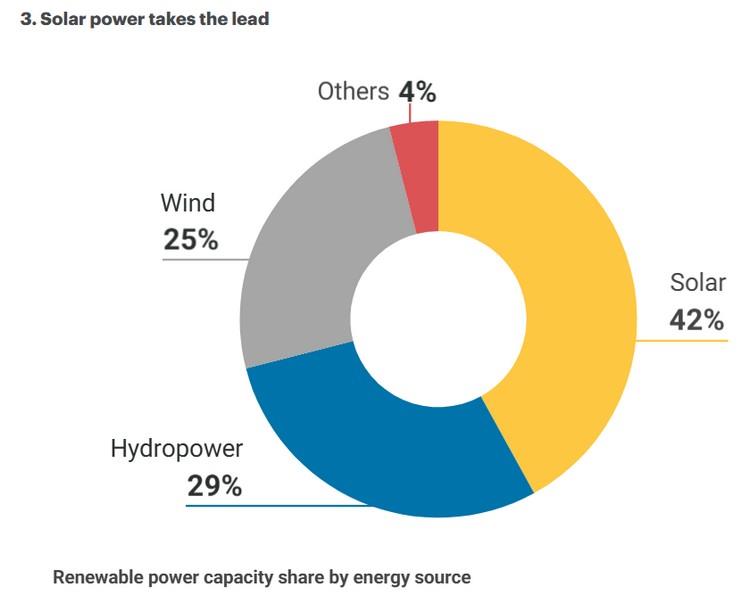
Solar energy remained the driving force behind this expansion, responsible for 42% of the total global renewable power capacity mix. The solar sector alone grew by 32.2%, adding almost 452 GW to reach a total capacity of 1 865 GW worldwide. Solar photovoltaic (PV) technology accounted for virtually all solar capacity growth, demonstrating its continued cost-effectiveness and scalability. In 2023, the global weighted average cost of electricity from new solar PV projects dropped by 12%, the steepest decline among major renewable sources.
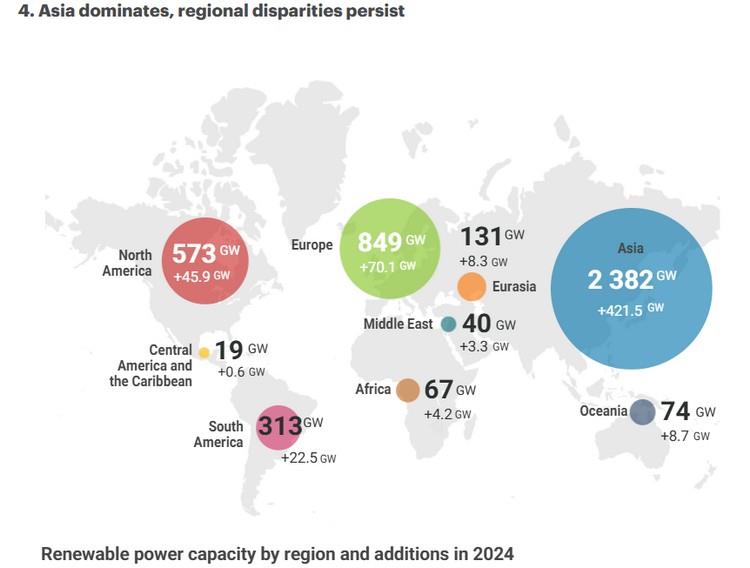
Regional disparities in renewable energy capacity deployment intensified from 2023 to 2024, with Asia strengthening its dominance from 69.3% to 72% of global additions at 421.5 GW. China alone accounted for over 88% of Asia’s increase. By contrast, the region of Central America and the Caribbean contributed the least with only 3.2% share of the global addition, while the Small Island Developing States saw their contributions decline from 1.1 GW in 2023 to just 0.7 GW in 2024. Africa’s capacity grew by only 4.2 GW and the Middle East by 3.3 GW, reflecting the persistent geographic disparities in renewables deployment, which presents a significant challenge to achieving the global tripling target.
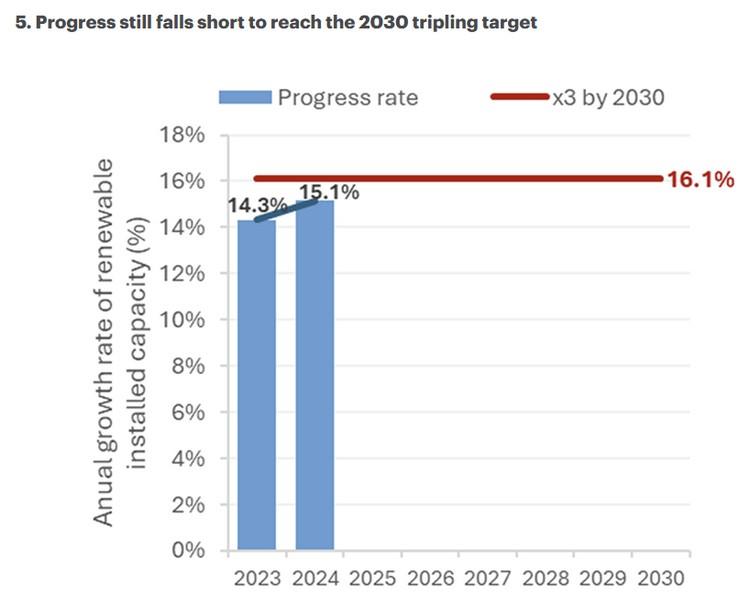
Despite a record growth rate of 15.1% in 2024, progress still falls short of the 11.2 terawatts needed to align with the global goal to triple installed renewable energy capacity by 2030. If the current growth rate persists, the world will be short approximately 0.8 TW by 2030. Achieving the target now requires an annual growth of 16.6% until 2030.
Boosting the annual growth rate requires more ambitious national targets. IRENA has consistently called for clear, quantifiable renewable energy targets in the next round of the Nationally Determined Contributions (NDCs). To that end, the Agency continues to support its members in enhancing and implementing their NDCs in the energy sector.
Read the full report Renewable Energy Statistics 2025 including the highlights, here.
Click here for full announcement
Source: IRENA
Search
RECENT PRESS RELEASES
Related Post

